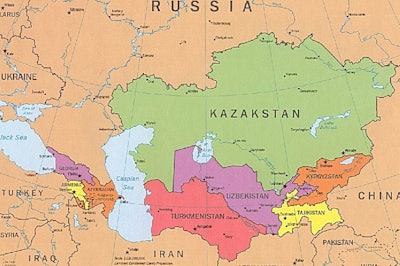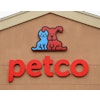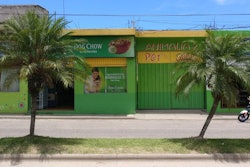
Henriette Bylling is well positioned for entering the Central Asian pet food market. She is the fourth-generation Bylling at the head of Aller Pet Food in Denmark since 2006, overseeing the company’s growth to approximately 130 distributors in the Commonwealth of Independent States (CIS) – former Soviet Union countries.
The family-owned company, with factories in St. Petersburg and Tver, Russia, was established in 1921 and entered the pet food market in 1979, having spent the six decades prior in agriculture and aquaculture feeds. Although the majority of Aller Pet Food’s business is within Russia, their location presents opportunities for expansion into the emerging five Central Asian economies.
Kazakhstan is pet food entry market
Despite the logistical advantages due to the company’s presence near these markets, with five distributors there currently, Bylling thinks that it is still too early for pet food in Central Asia. “The markets are too small and they are not looking for private label pet food right now,” she says.
Bylling continuously assesses the low volumes in Central Asia, noting that the entry point to the Central Asian pet food market is Kazakhstan. It is Aller’s sole representation in Central Asia currently, with the company actively looking to enter Uzbekistan and Tajikistan as well.
Bylling notes that she has been looking for data to aid in her decision-making process, something that has been difficult to obtain in these countries. She refers to Kazakhstan as a cat-dominated country, which is her assessment of the region in general. She shares that 53% of the Kazakh pet food market share is controlled by Mars, with another 32% controlled by Nestlé.
“That is quite normal at an emerging economy stage,” Bylling explains. “This is a challenge for us, but also for Mars and Nestlé, because how will they be able to keep up this market share in the long term?”
To move around these big players, Bylling has a strategic vision: “We need to diversify our risks and tap into a variety of partners, such as grocers and vets, because the market is so small,” she clarifies. “I’m looking to grow with these markets so when I say the market is quite low, I ask, can I grow with the market and position myself?”
Long-term goal: local pet food production
In Bylling’s mind, that growth potential for Aller Pet Food in Central Asia is in sustaining a market position that allows them to build factories there in the long run, primarily to reduce logistics costs. “Though these countries are neighbors, the distances are very far, and logistics costs are high,” she says. “It would make sense to produce more locally once the markets are grown.”
Bylling has developed strong documentation for her Russian factories that will allow her company to take advantage of the preferential trade agreements between Russia and Central Asia countries, until those markets are large enough to justify manufacturing investment.
She also believes these markets are not capable of attracting customers toward quality and premium products yet, since they are still price-driven. Bringing in awareness on options and quality in a transparent manner will improve the market for Aller Pet Food. “When people become aware and educated, and are dedicated about pet food, their pets and the buying process, then they crave choice over price,” she responds when asked what obstacles to a Central Asian expansion remain for her.
Finding local partners that match Aller Pet Food’s mindset and approach in Central Asia is also a challenge for Bylling. But most pressing is ensuring that local partners have the financial capacity to maintain a long-term relationship with her company. “One of the biggest problems is availability of the products on the shelves and that might not happen if the company can’t pay for your stock,” she tells. “And the customer will choose something else.”
As the region reaches new heights, working with those challenges can prove to be an effective strategy for investing in Central Asia.

















